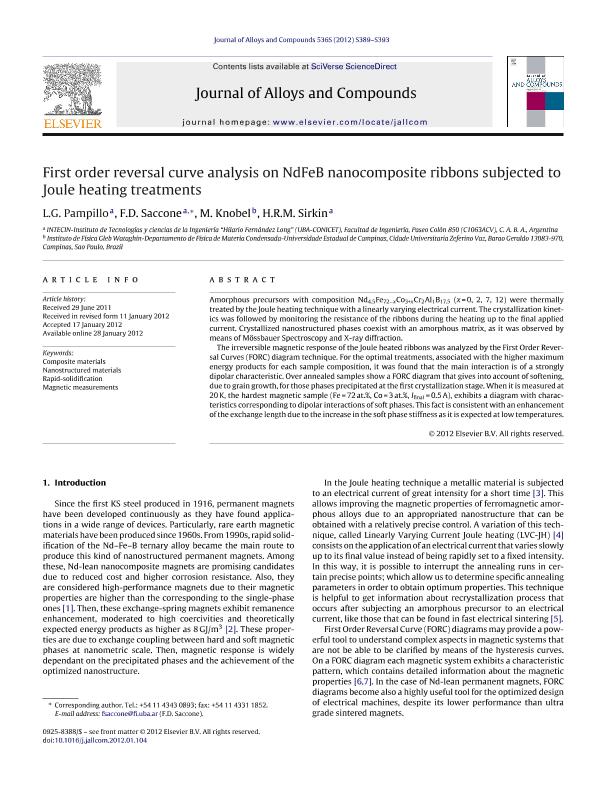Artículo
First order reversal curve analysis on NdFeB nanocomposite ribbons subjected to Joule heating treatments
Fecha de publicación:
09/2012
Editorial:
Elsevier Science
Revista:
Journal of Alloys and Compounds
ISSN:
0925-8388
Idioma:
Inglés
Tipo de recurso:
Artículo publicado
Clasificación temática:
Resumen
Amorphous precursors with composition Nd4.5Fe72−xCo3+xCr2Al1B17.5 (x = 0, 2, 7, 12) were thermally treated by the Joule heating technique with a linearly varying electrical current. The crystallization kinetics was followed by monitoring the resistance of the ribbons during the heating up to the final applied current. Crystallized nanostructured phases coexist with an amorphous matrix, as it was observed by means of Mössbauer Spectroscopy and X-ray diffraction. The irreversible magnetic response of the Joule heated ribbons was analyzed by the First Order Reversal Curves (FORC) diagram technique. For the optimal treatments, associated with the higher maximum energy products for each sample composition, it was found that the main interaction is of a strongly dipolar characteristic. Over annealed samples show a FORC diagram that gives into account of softening, due to grain growth, for those phases precipitated at the first crystallization stage. When it is measured at 20 K, the hardest magnetic sample (Fe = 72 at.%, Co = 3 at.%, Ifinal = 0.5 A), exhibits a diagram with characteristics corresponding to dipolar interactions of soft phases. This fact is consistent with an enhancement of the exchange length due to the increase in the soft phase stiffness as it is expected at low temperatures.
Archivos asociados
Licencia
Identificadores
Colecciones
Articulos(INTECIN)
Articulos de INST.D/TEC.Y CS.DE LA ING."HILARIO FERNANDEZ LONG"
Articulos de INST.D/TEC.Y CS.DE LA ING."HILARIO FERNANDEZ LONG"
Citación
Pampillo, Laura Gabriela; Saccone, Fabio Daniel; Knobel, Marcelo; Sirkin, Hugo Ricardo Mario; First order reversal curve analysis on NdFeB nanocomposite ribbons subjected to Joule heating treatments; Elsevier Science; Journal of Alloys and Compounds; 536; Supl. 1; 9-2012; 389-393
Compartir
Altmétricas




